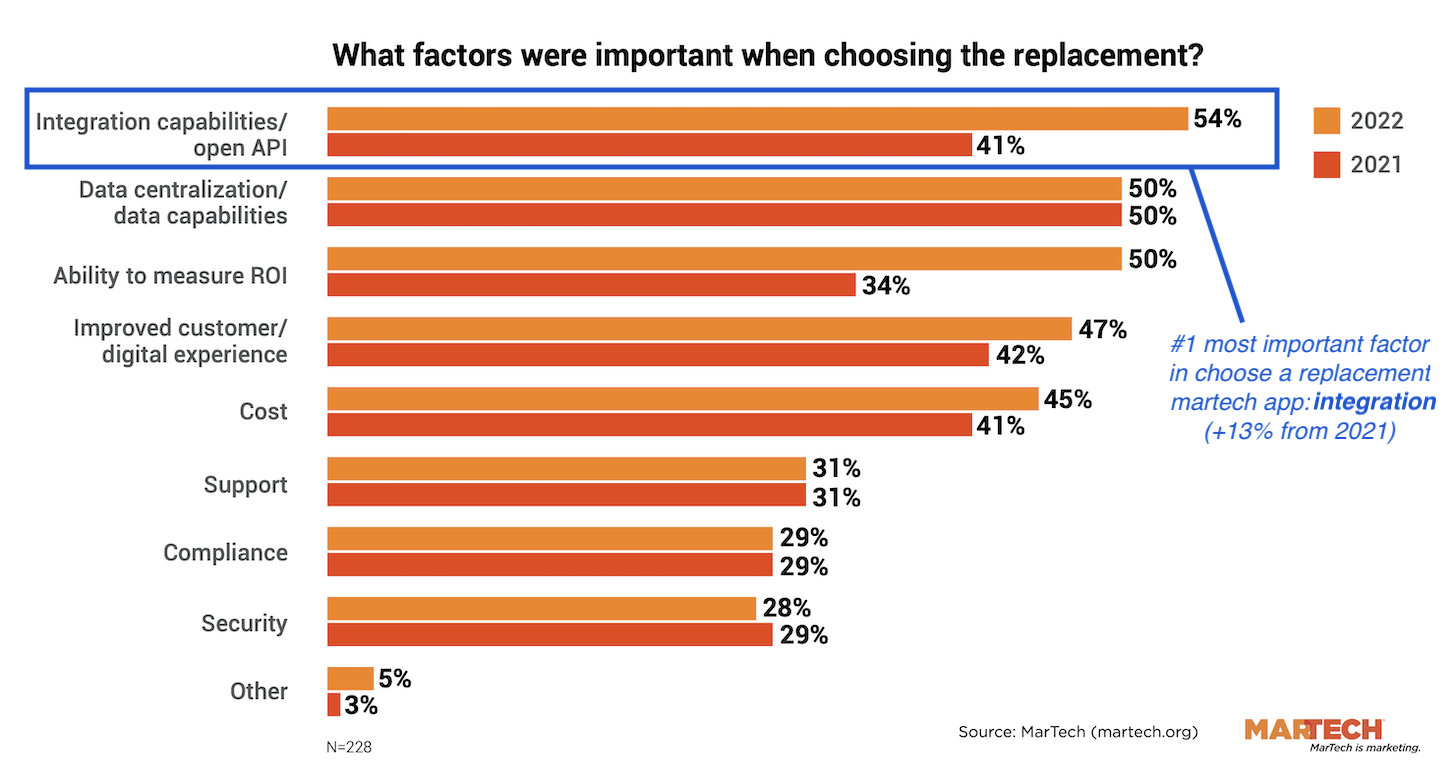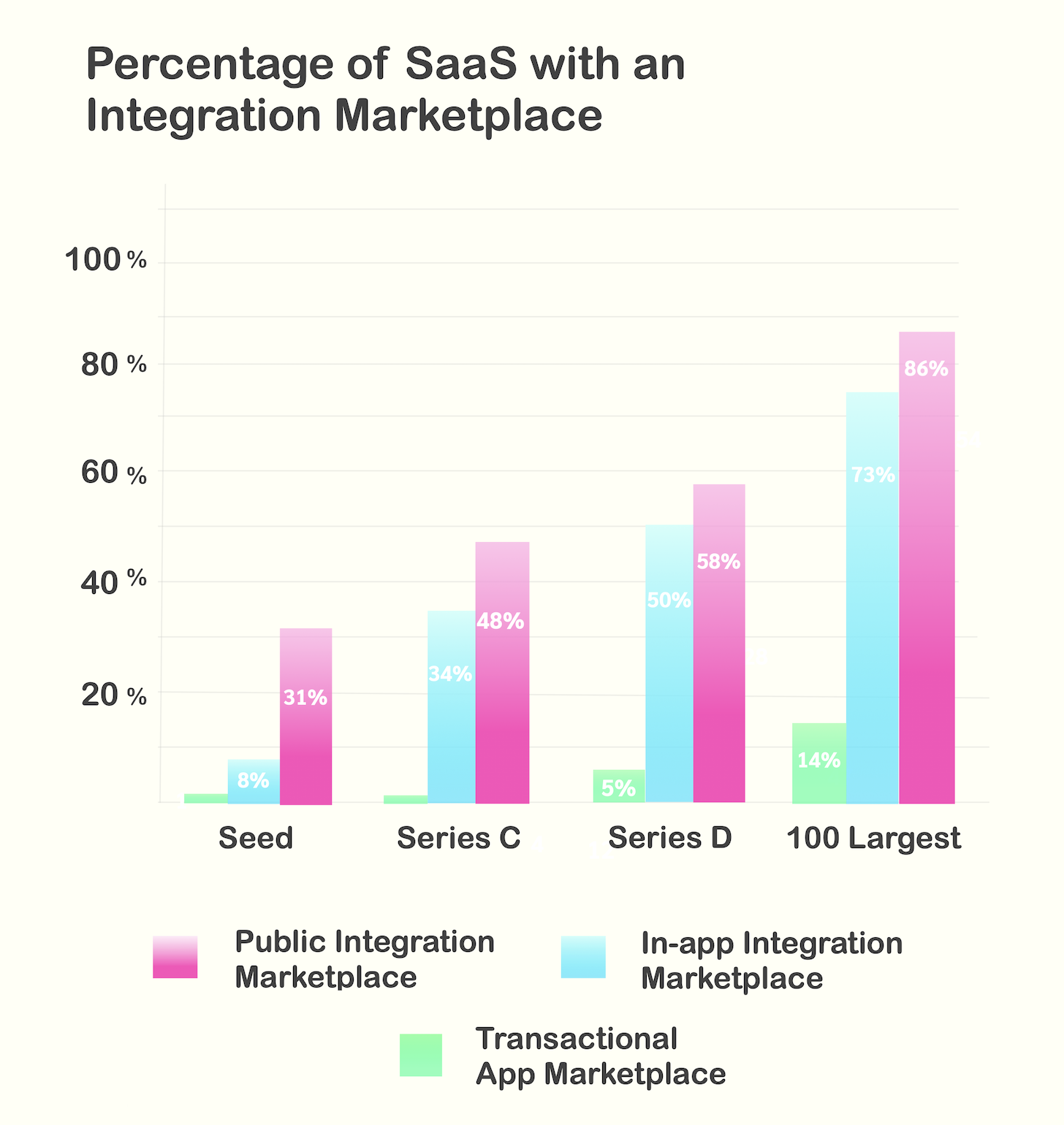
My pals at MarTech.org lately introduced their latest Martech Replacement Survey 2022, exactly where entrepreneurs shared which applications they’ve replaced more than the earlier 18 months, what their principal motivation was in accomplishing so, and what ended up their most essential variables in selecting the alternative solution.
Promoting automation (24%), CRM (23%), Seo (23%), e-mail internet marketing (22%), and operate/job management (19%) applications were being the most commonly changed.
As I highlighted in blue in the chart over, the #1 most commonly cited aspect in selecting their substitute resolution was integration capabilities/open up API — picked by 56% respondents, up 13% details from the same study in 2021.
It’s a top 5 topic of this decade in martech: platforms, networks & marketplaces.
Of course, this is not to say that the other components — cost, assistance, security, etc. — weren’t important way too. But the variable that most entrepreneurs agreed on was integration. If it will not integrate with the rest of the tech stack, all the things else is moot. It is the tree that falls in the forest with no any one all around to listen to it.
The second most frequent variable was details centralization/data abilities (preferred by 50% of respondents), which is intently tied to integration. Just after all, details is the foundational layer of integrations.
Tied in 2nd also with 50% was “ability to measure ROI” — which is heading to be on the top rated of everyone’s minds in our tighter financial system. But to evaluate ROI, you require the details. And to get the facts, you need to have integrations. These three variables are bound collectively by atomic forces.
But what motivated marketers to seek out out a substitute option in the to start with spot?

When looking to replace a industrial app (the survey covers alternative of homegrown applications separately), the #1 determination was improved options (53%). Of study course, this helps make perception. Marketers seem to martech to give them the abilities necessary to execute in regularly shifting and evolving markets. What you can do matters.
Nevertheless, I would have predicted the #2 commitment to be price — trying to get an option solution to cut down expenditures. That was the study consequence in 2021.
But in 2022, improved/much easier integration was the next most typical determination (24%, up 5% factors from 2021) to request a substitute application. Basically, a motivation for better integration triggered 1 out of each individual 4 martech app substitution tasks.
Which is really exceptional.
I’ve said this lots of times in advance of to martech product groups: the marketplace is speaking to you with a wonderful booming voice in the sky, “Treat integration as a initially-course element!”
Increasingly, the martech marketplace — and the SaaS universe much more broadly — have taken this to heart. A new study report from Pandium on the State of Integrations and APIs at 400 SaaS Firms exhibits that 86% of the Major 100 SaaS organizations in the globe now have a community integration market. (73% of them have an in-app market.)

That is impressive and a robust testomony to the importance of application ecosystems for major SaaS businesses.
But what’s even more telling is that 31% of seed-phase SaaS startups now function a public integration market too. Almost 1 out 3 SaaS startups — which are in particular strapped for time and sources, forced to make quite tough decisions about what to prioritize — have decided on to prioritize producing the two integrations and a marketplace to make it effortless for buyers to find and use them.
It’s heartening to see martech potential buyers and sellers agree: integration is crucial.
We continue to have more to go on this journey of martech platforms and ecosystems. But as an market, at least’s we’re all marching in the very same way with a substantially a lot more seamlessly and powerfully built-in foreseeable future on the horizon ahead.





More Stories
How To Boost Conversions With Email Hosting?
How Paper Packaging Effectively Helps Protect the Environment
Experience the Magic: How Google AI Lamda Transforms Conversational AI